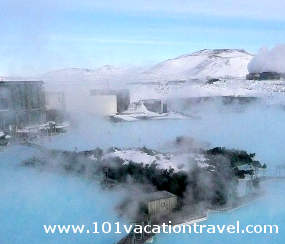Vacations in Iceland

Introduction to Iceland
Being Europe westernmost country, Iceland is the second largest island in the North Atlantic Ocean with around 320,000 in population. Almost half of the Icelander resides in the capital city, Reykjavik, while the rest of the population lives in neighboring towns along the coast line. In 9th Century, a Norwegian Viking found Iceland and settled in today‘s Reykjavik and subsequently, in 10th century, one of the world‘s first republican government was formed. This Parliament lasted until 13th century, when Iceland lost its independence. The Parliament was formed in Pingvellir and the area is now known as Pingvellier National Park. Iceland is sitting on one of the world’s most volcanically active area, having many volcanoes such as Hekla and Eldgja. This volcanic reaction created hot spring, geysers, crater and mud pool, which became popular vacation destinations for travelers all over the world.
Natural Phenomena
Iceland is a country blessed with natural phenomena, both geologically and meteorologically. The Strokkur geysers, the natural geothermal pool in Blue Lagoon or Vatnajokull, the third largest glacier in the world, just to name a few. As on the meteorological aspect, Aurora Boreallis (Northern Light), midnight sun and polar nights are the natural phenomena that one can experience during the visit to Iceland.
Transportation in Iceland
Keflavik International Airport is located approximately 50km from Reykjavik, the capital city. Keflavik is the major and largest airport in Iceland and serves both international and domestic routes. For domestic flight, Icelander rely on another hundreds of domestic airports and airfields in Iceland. Most of them are in rural areas and are unpaved. The major transportation in Iceland is by car, and Icelander holds the record of highest car ownership per capita. Highways and roads are well established around major towns. Visitors can easily hire taxi or hop on to city buses for city sight seeing. There is no railway in Iceland.
Official Language in Iceland
The official language is Icelandic. English is widely spoken in the country.
Best Time to Travel to Iceland
Weather in Iceland is not as cold as it sound. The warm North Atlantic current generally increases the temperature as compared to countries in similar latitude. Icelandic weather is temperate, with a mild and windy winter, coldest in December or January at around -1°C. Summer is cool like other Scandinavian countries, generally around 16°C in July. Traveling to Iceland can be anytime of the year, witnessing different natural phenomena it has to offer. During winter, there is a period with no sunlight throughout the day. This is referred to as ‘The Polar Nights’. In summer, the contrary applies. There is no darkness in June and July. This is known as the Midnight Sun. Northern Lights, or officially known as Aurora Borealis, is said spectacular to be seen in Iceland or Norway anytime of the year, but best from September to April.
Places of Interest in Iceland
A metropolitan city surrounded by wonderful landscapes created by hand of mother nature. Reykjavik is a city for appreciation of splendid sceneries yet offering a city life style.
A neighbouring cities around Reykavik. You can witness the magical moments of Geyser eruption, see the remaining of Parliament formed over 1000 years ago, or watching Northern Lights in awe silent, or relax in the world famous geothermal pool, Blue Lagoon.
A wonderful pictureques scenery by hand of mother nature. This is the largest glasier lake in Iceland, with iceberg chipping off from the nearby glacier floating freely around the lagoon.


